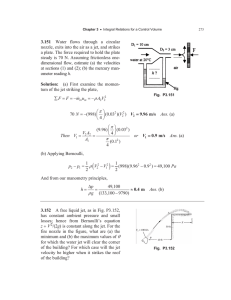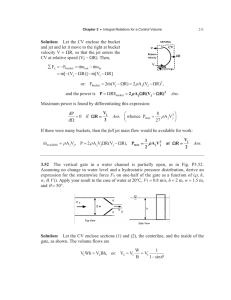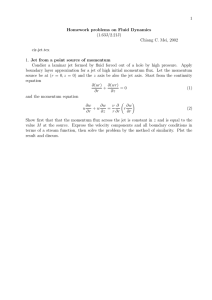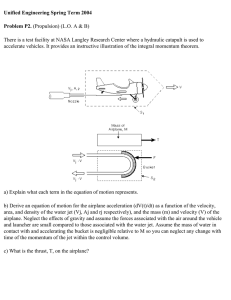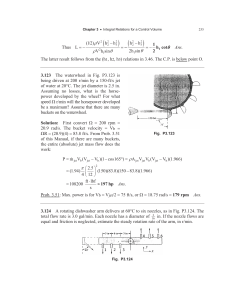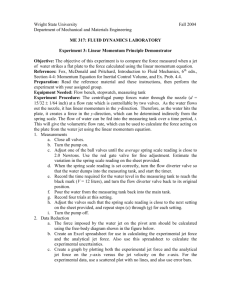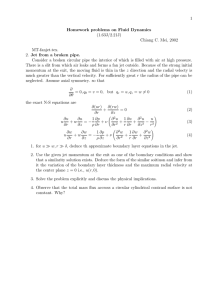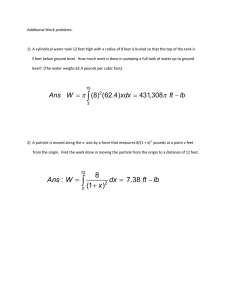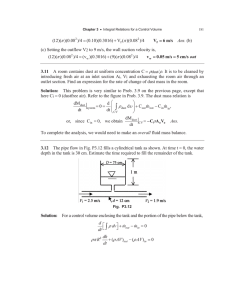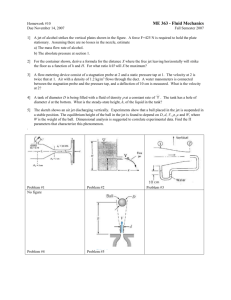Solution: student still must make a CV analysis similar to Prob.... exactly the same shape, so the result from Prob. 3.44...
advertisement
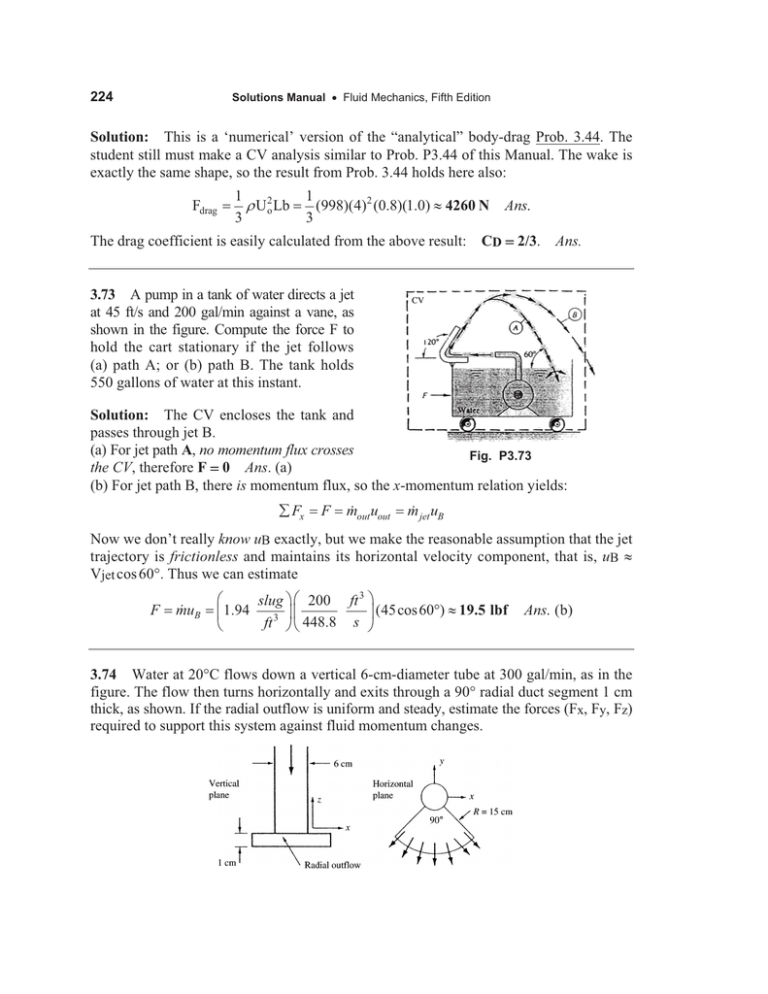
224 Solutions Manual x Fluid Mechanics, Fifth Edition Solution: This is a ‘numerical’ version of the “analytical” body-drag Prob. 3.44. The student still must make a CV analysis similar to Prob. P3.44 of this Manual. The wake is exactly the same shape, so the result from Prob. 3.44 holds here also: Fdrag 1 U U o2 Lb 3 1 (998)(4)2 (0.8)(1.0) | 4260 N 3 Ans. The drag coefficient is easily calculated from the above result: CD 2/3. Ans. 3.73 A pump in a tank of water directs a jet at 45 ft/s and 200 gal/min against a vane, as shown in the figure. Compute the force F to hold the cart stationary if the jet follows (a) path A; or (b) path B. The tank holds 550 gallons of water at this instant. Solution: The CV encloses the tank and passes through jet B. (a) For jet path A, no momentum flux crosses Fig. P3.73 the CV, therefore F 0 Ans. (a) (b) For jet path B, there is momentum flux, so the x-momentum relation yields: ¦ Fx F m out uout m jet uB Now we don’t really know uB exactly, but we make the reasonable assumption that the jet trajectory is frictionless and maintains its horizontal velocity component, that is, uB | Vjet cos 60°. Thus we can estimate F B mu § slug · § 200 ft 3 · 1.94 ¸ (45cos60q) | 19.5 lbf ¨ ¸¨ ft 3 ¹ © 448.8 s ¹ © Ans. (b) 3.74 Water at 20°C flows down a vertical 6-cm-diameter tube at 300 gal/min, as in the figure. The flow then turns horizontally and exits through a 90° radial duct segment 1 cm thick, as shown. If the radial outflow is uniform and steady, estimate the forces (Fx, Fy, Fz) required to support this system against fluid momentum changes.
